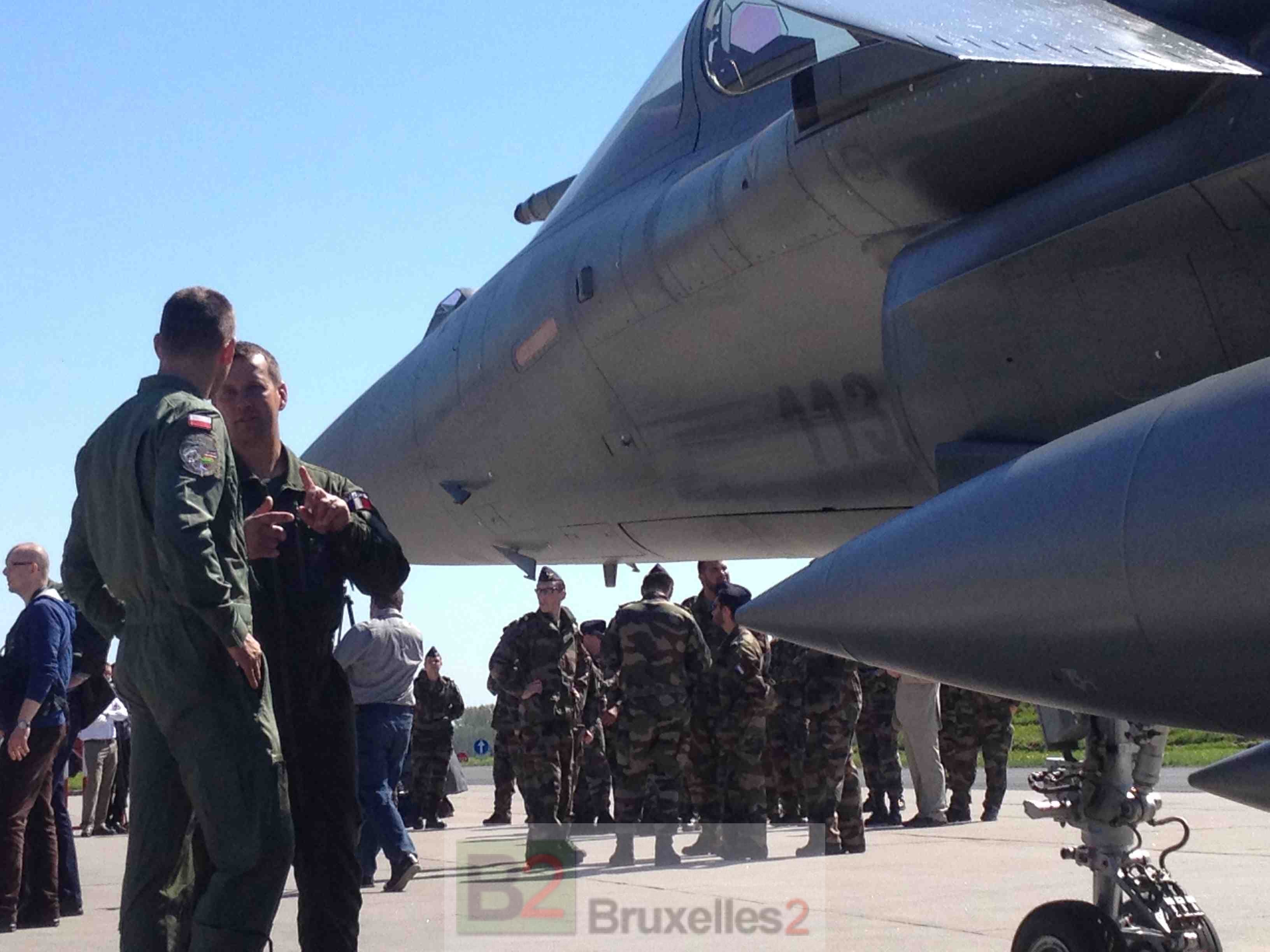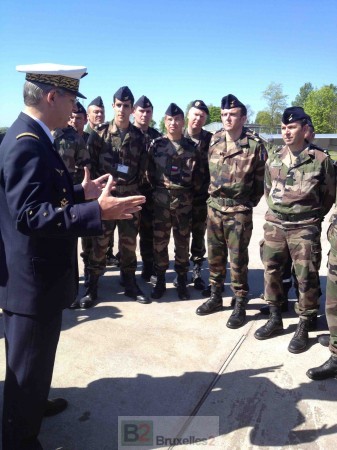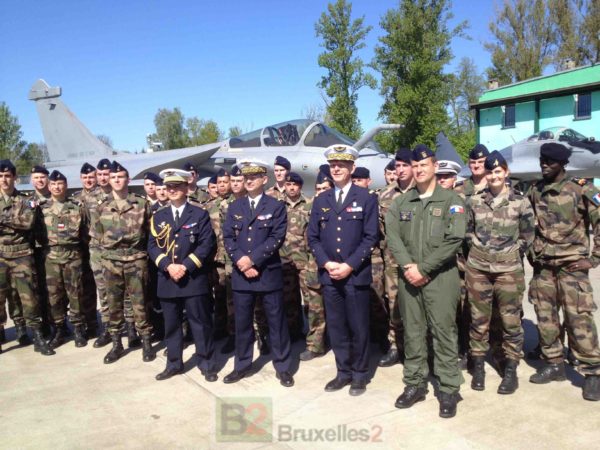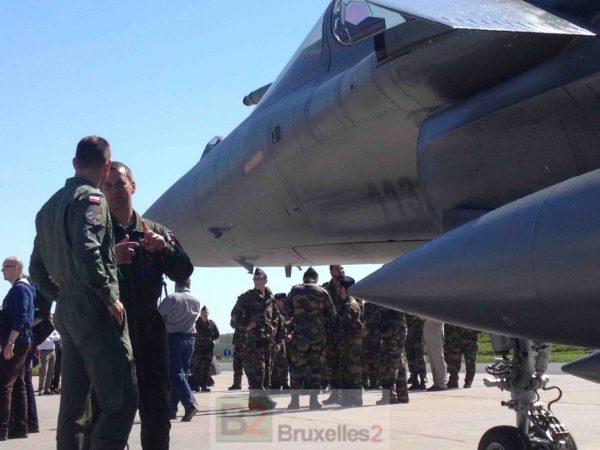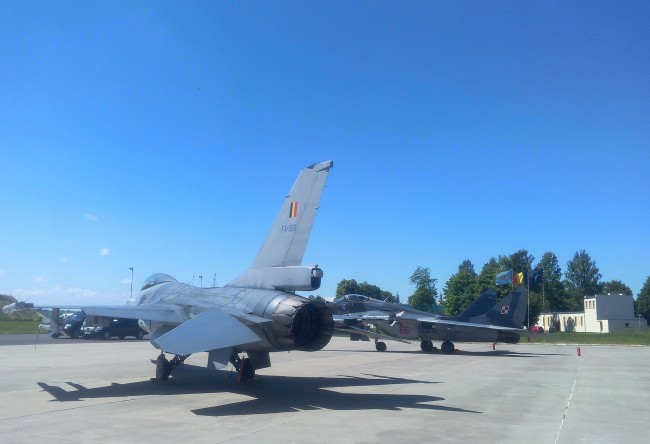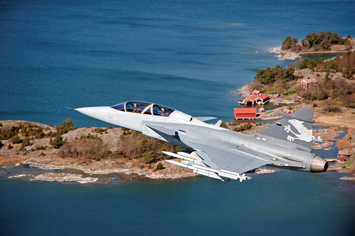4 French Rafale present in Malbork. More than a symbol...
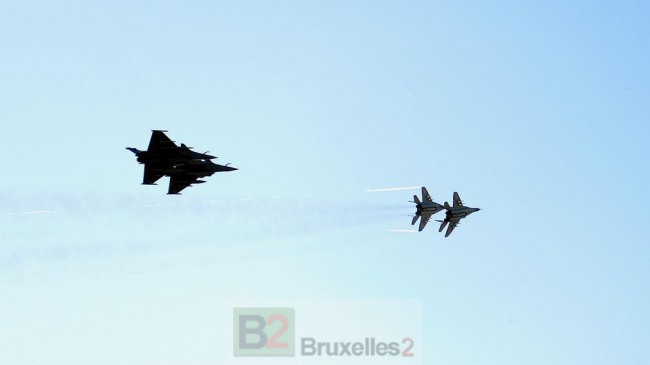
(BRUSSELS2 to Malbork) It was a double departure and arrival ceremony which took place in full sun on the Polish army's tactical air base 22 on Tuesday (April 29). On the one hand, the detachment Orlic 5 - made up of 4 Polish Mig 29 aircraft - is about to leave for Siauliai in order toprovide aerial surveillance of the Baltic States. On the other, 4 Rafale French arrive in Poland to reinforce this surveillance of the Baltic countries. They will each be operational tomorrow (May 1).
Reinsurance
This arrival is part of a series of reinforcements decided within NATO with the aim of "reinsurance". A term, translated from english but borrowed from the economic vocabulary, which includes several aspects. On the one hand, securing the area (insurance). On the other hand, the need to reassure the countries concerned, in the first line, and their population, in what must be called a conflict, the Russian-Ukrainian conflict. Their allies are present at their side. It is also undoubtedly a sign of deterrence against Russian military aircraft, which regularly tend to stray somewhat off their traditional route, especially when flying over the Baltic countries. It is worth remembering that both Poland and Lithuania have a common border with Russia, via the enclave of Kaliningrad, while the other two Baltic countries (Latvia and Estonia) also have a border with Russia. As for Ukraine, Poland, Slovakia, Hungary and Romania have a common border. And Bulgaria has a common facade (with the Black Sea).
- People on deck facing Russia: 22 fighter planes, 2 surveillance planes. There are now people on the bridge between the Baltic and the Black Sea facing Russia. We would almost even jostle each other. On the Baltic skies, there are today 16 on-call aircraft which can ensure the surveillance of the sky as well as the tactical interpellation of Russian planes: the 4 Polish Mig 29s - which provide normal on-call duty - + 4 British Typhoons - based in Siauliai (Lithuania), 4 Danish F-16s based in Amari (Estonia) + 4 French Rafale based in Malbork (Poland). All should be operational from May 1. Above the Romanian sky, there are 6 Canadian CF-18 planes. To this must be added more strategic air surveillance with, in particular, a British Sentry E-3D and an Awacs E-3A belonging to the NATO combined fleet and based in Geilenkirchen (Germany), supplemented if necessary by French or Americans.
Reassure Poland... Deter Russia
This triple objective was not denied by the French Minister Le Drian who came to greet the French and Polish pilots on the tarmac at Malbork. This initiative aims to to deter and reassure. Dissuade to avoid any harmful intervention by Russia. And reassure to show Poland that we are an ally »
A relationship of solidarity between allies
The meaning of our relationship, he added, is " to be present when the security interests of the other partner are at stake. You have been there in the face of threats from the southern flank which threaten Europe, in Mali and in the Central African Republic. We were reactive when the eastern flank was in trouble. (…) France is there” declared Minister Le Drian to his Polish counterpart. Before adding: France and Poland share the same ambition: that of considering that the defense effort is an essential issue for our democracies. The crises unfolding at the gates of Europe forcefully remind us of the imperative of security, the need for effort, and the urgency of solidarity. »
The goal: de-escalation
“In this case, you have to combine firmness and responsibility. Firmness is the sanctions and the military presence that we demonstrate here. The responsibility is the desire for de-escalation and to ensure that the Geneva agreements are respected and that the presidential elections can take place normally in Ukraine. Which means today the release of OSCE observers. » A hostage taking "completely unacceptable" added the Minister (in response to a question from B2). “In the full sense of the term, unacceptable he repeated. As for the sanctions, the objective is very clear according to him. “The purpose of the sanctions is to penalize Russia so that the Geneva agreement can be implemented. It’s obviously de-escalation” who is targeted.
The most serious crisis since the Helsinki acts
It's here " the most serious crisis in years, since the end of the cold war and even further upstream since the Helsinki agreements (1975) » underlined the French minister « We are in a serious moment. Our fundamentals are challenged. » A statement that Polish President Bronisław Komorowski does not deny. On the contrary. “We have to deal with the escalating crisis between Russia and Ukraine. A “touch touch” crisis. For us, this (presence) is not only symbolic, it is also a sharing of the burden, of the task. »
Be careful !
Quickly briefing the crews, General Mercier, Chief of Staff of the French Air Force, reminded them how much this " mission is important given the security context », recalling in passing the long "tradition of collaboration between the French and Polish air forces dating back to the 1st World War", when French advisers help rebuild the Polish army (NB: Haller's blue army in particular). " be careful » he launched to them before taking the plane with the Minister bound for Paris for a less exciting subject (the stability pact and the budgetary restrictions).
- Europe produced a period of stability. Previously, with journalists, the Air Force Chief of Staff had evoked another memory, that of the landing of Mirage 2000 planes, in the Czech Republic, just after the fall of the Berlin Wall. " I lived through the transition from the cold war to the post cold war. We then found airmen who had the same motivations as us on the other side. Our friendship grew very quickly. (...) We talk a lot about things that don't work in Europe. I see one thing that works, a Europe that has made it possible to move forward with much more friendship between all peoples and a period of stability that we have never known for a long time. And that's a very good thing. »
Under NATO orders
Concretely, the Rafales - from BA 113 (Saint Dizier) and BA 118 (Mont de Marsan) - will be placed under NATO command like their Polish and British counterparts. French planes will normally have the sole mission of monitoring the Baltic countries and not that of Poland - which remains provided by Polish planes. They will also be able to carry out any other mission assigned to it by NATO. It is the CAOC (air traffic control operational center) of Uedem in the Netherlands which will ensure this control. It is he who will give the mission orders. And possibly specify the action to be taken. But, in any case, the French will retain a certain operational autonomy, particularly in the event of level 2 measures - that is to say restrictive measures vis-à-vis the "suspect" aircraft.
2 outings per day
The contract is for the planes to be in the air within 10-15 minutes. They will be " armed "said General Mercier and will be able to" operate as they do above French national territory with all the measurements (required) : " recognition or identification measures, coercive measures”. « On average, it is planned to make 2 outings per day » explained a French officer to B2, a patrol of two planes. Each of these outputs will therefore not be operational. In the meantime, the pilots will make familiarization flights with the terrain, exercises, nationally or multinationally with the Poles ". In particular combat or pursuit exercises between Rafale and Mig 29, this can be very interesting, not just for fun... " Being here on a ground not known to all is interesting »
- Industrial considerations too. It should not be denied that the presence of the Rafale on Polish territory is also a means of concretely promoting this device. The conversation between the two French and Polish pilots, on the sidelines of the event, captured on the spot (see photo) showed it. One demonstrating to the other the possibilities and facilities of the French aircraft. Comparing it to the Mig 29 is difficult, as confided, a bit envious, another pilot with the red and white checkerboard (the acronym of the Polish fighter aviation) The Mig 29 "is a device that requires a lot of attention. And even renovated (retrofitted), the avionics of this aircraft are still old, a bit outdated...
(Nicolas Gros-Verheyde)
